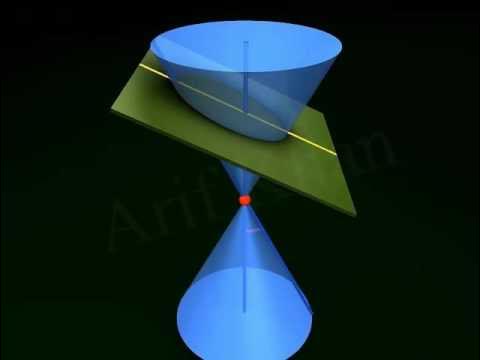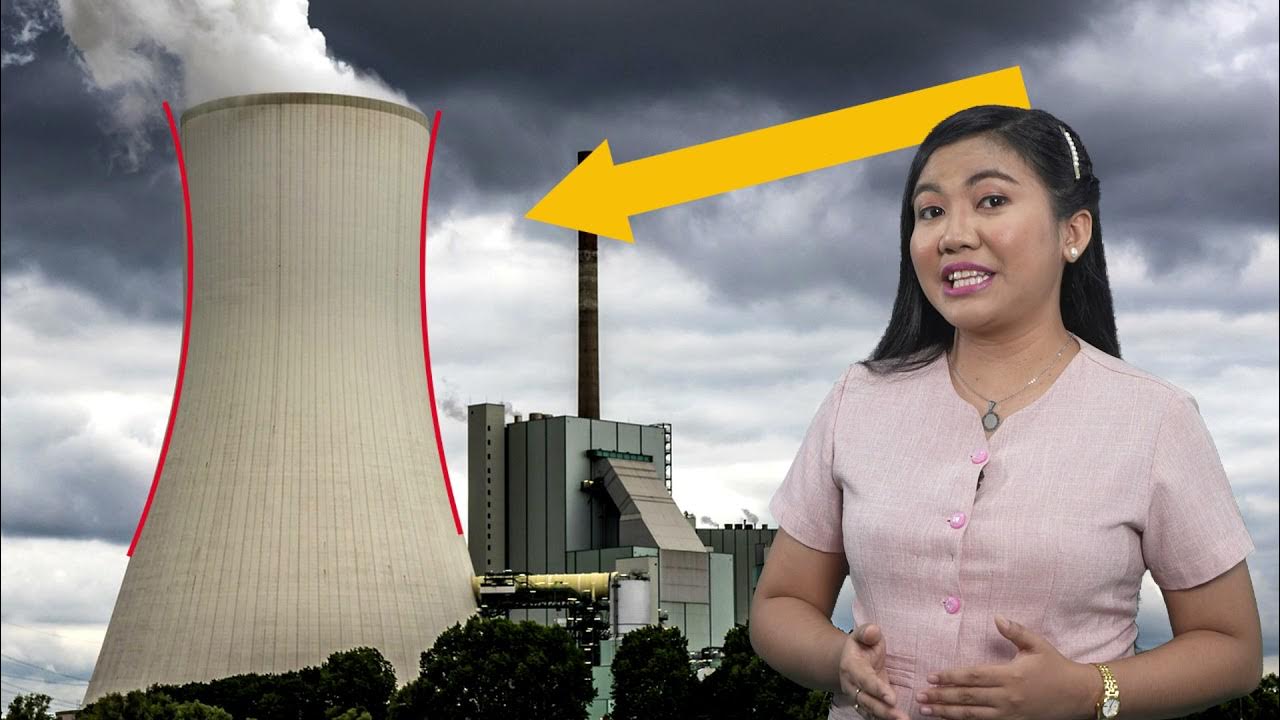Intro to Conic Sections | Pre Calculus | STEM Math
Summary
TLDRIn this educational video, the teacher introduces the concept of conic sections, explaining how different shapes like circles, parabolas, ellipses, and hyperbolas are created by intersecting a cone with a plane. The video provides a visual representation of how the orientation and position of the intersecting plane determine the resulting conic section, offering a clear and concise explanation suitable for students studying pre-calculus and analytic geometry.
Takeaways
- 📚 The video is an introduction to coding, specifically for students studying STEM subjects like pre-calculus and analytic geometry.
- 📐 The concept of a circle is explained by intersecting a plane with a cone, where the plane is parallel to the base of the cone.
- 🎶 The script mentions a second topic but is interrupted by music, suggesting the importance of different conic sections.
- 🚀 A parabola is formed when a plane intersects a cone and touches its base, creating different orientations like upward, downward, left, and right.
- 🌟 An ellipse is derived from the intersection of a plane and a cone, where the plane is not parallel to the base, resulting in different orientations compared to a circle.
- 🔍 The hyperbola is created by intersecting a plane perpendicularly with two different cones, as opposed to a single cone for the other conic sections.
- 📉 The video provides a summary of how different conic sections—circle, parabola, ellipse, and hyperbola—are formed by varying the intersection of a plane with a cone.
- 👨🏫 The importance of understanding these conic sections is emphasized for students in STEM fields, suggesting their relevance in various scientific and mathematical applications.
- 🌈 The video aims to educate and engage viewers on the topic of conic sections, indicating the presenter's intention to make the subject accessible and interesting.
- 📈 The presenter encourages viewers to like and subscribe for updates on latest uploads, showing an intent to build a community around the educational content.
- 🎥 The transcript suggests the use of visual aids, such as the intersection of planes and cones, to illustrate the formation of conic sections.
Q & A
What is the main topic of the video?
-The main topic of the video is the introduction to conic sections, specifically focusing on the concepts of circle, parabola, ellipse, and hyperbola.
Why is this topic important for students?
-This topic is important for students who are taking up STEM subjects like pre-calculus and analytic geometry, as conic sections are fundamental concepts in these areas.
How is a circle created in the context of conic sections?
-A circle is created when a plane intersects a cone and the plane is parallel to the base of the cone.
What is a parabola and how is it derived?
-A parabola is a conic section that resembles the shape of an open bowl. It is derived when a plane intersects a cone and touches the base of the cone.
Can you describe the orientation of an ellipse in conic sections?
-An ellipse has a different orientation compared to a circle. It is derived when a plane intersects a cone, and the plane is not parallel to the base of the cone.
How does the orientation of a plane intersecting a cone affect the shape of the conic section?
-The orientation of the plane relative to the cone determines the type of conic section formed. Parallel intersections create circles, tangent intersections create parabolas, and non-parallel intersections create ellipses or hyperbolas.
What is a hyperbola and how is it formed?
-A hyperbola is a conic section that has two separate curves. It is formed when a plane intersects two different cones perpendicularly.
What are the different types of parabolas mentioned in the script?
-The script mentions four different types of parabolas that open upward, downward, to the left, and to the right of the horizontal line.
What is the significance of the base of the cone in the formation of conic sections?
-The base of the cone is significant because the relationship between the intersecting plane and the base determines the type of conic section formed, such as a circle, parabola, ellipse, or hyperbola.
How can the video help students who are new to the subject?
-The video provides a clear and concise introduction to conic sections, explaining the formation of each type and helping new students to understand the basic concepts and their geometric properties.
What does the instructor encourage viewers to do at the end of the video?
-The instructor encourages viewers to like and subscribe to the channel for updates on the latest uploads, indicating a continuation of the topic in future videos.
Outlines

This section is available to paid users only. Please upgrade to access this part.
Upgrade NowMindmap

This section is available to paid users only. Please upgrade to access this part.
Upgrade NowKeywords

This section is available to paid users only. Please upgrade to access this part.
Upgrade NowHighlights

This section is available to paid users only. Please upgrade to access this part.
Upgrade NowTranscripts

This section is available to paid users only. Please upgrade to access this part.
Upgrade NowBrowse More Related Video

What are Conic Sections? | Don't Memorise

Irisan Kerucut Matematika Kelas 11 • Part 1: Macam-Macam (Lingkaran, Parabola, Elips, Hiperbola)

Conic Section 3D Animation

Introduction to Conic Sections

Conic Sections - Circles, Semicircles, Ellipses, Hyperbolas, and Parabolas

SHS Pre-calculus Q1 Ep1: Introduction to Pre-calculus and Conic Sections
5.0 / 5 (0 votes)